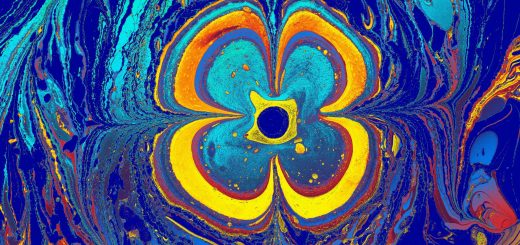Theory of Parallel Universes

Before diving in, please note: This post is for informational purposes only. If you’d like to know more about how we approach topics, feel free to check out our friendly Disclaimer Page.
Hey there, amazing readers! 🖐️ Just a quick note: yes, we know there are a lot of ads here. Trust us, we get it—it’s not the prettiest look, but they help us keep this blog alive and kicking. Those pesky little ads cover the costs of all the behind-the-scenes magic, from hosting and tech stuff to creating content we hope you’ll love.
We’re committed to delivering quality posts, and your support (even just sticking around despite the ads) means everything to us. So, bear with us, and thanks for helping us keep the good vibes rolling. Now, on to the fun stuff! 😉
TRANSLATE BUTTON AT THE END OF THE ARTICLE
Introduction to Parallel Universes
Parallel universes, a fascinating concept in theoretical physics, propose the existence of multiple universes beyond our observable reality.
This theory suggests that there could be other universes parallel to our own, each with its own set of physical laws, constants, and even alternate versions of ourselves.
The idea of parallel universes has captured the imagination of scientists, philosophers, and the general public alike, sparking debates about the nature of reality and the possibilities that lie beyond our current understanding of the cosmos.
Historical Background of the Theory
The concept of parallel universes dates back centuries, with early mentions found in ancient Hindu mythology and various philosophical writings.
However, the modern scientific exploration of parallel universes began with the advent of quantum mechanics and the development of the multiverse theory in the mid-20th century.
Physicists such as Hugh Everett III and Bryce DeWitt introduced the concept of branching timelines and multiple parallel realities, laying the foundation for further research into the nature of the multiverse.
Understanding Multiverse Theory
Multiverse theory, the umbrella term for theories involving parallel universes, posits that our universe is just one of many universes that exist simultaneously.
These universes may differ in fundamental ways, such as the values of physical constants or the outcome of historical events.
The multiverse theory encompasses various ideas, including the Many-Worlds Interpretation of quantum mechanics, which suggests that every possible outcome of a quantum event actually occurs in a separate universe.
Types of Parallel Universes
There are several proposed types of parallel universes within the framework of multiverse theory.
Some of the most prominent include:
Level I Multiverse: A universe that extends infinitely far beyond our observable universe, containing regions with different physical properties.
Level II Multiverse: Universes that exist in separate "bubble" domains within a larger multiverse, each with its own unique properties.
Level III Multiverse: An infinite number of universes that exist as mathematical structures, such as the landscape of string theory.
Level IV Multiverse: All possible mathematical structures exist as universes, encompassing every conceivable set of physical laws.
Quantum Mechanics and Parallel Universes
Quantum mechanics, the branch of physics that deals with the behavior of particles on the smallest scales, plays a crucial role in the formulation of parallel universes theory.
The principles of superposition and entanglement in quantum mechanics suggest that particles can exist in multiple states simultaneously and that information can be shared instantaneously across vast distances.
These phenomena have led some physicists to propose that parallel universes are a natural consequence of the quantum nature of reality.
Parallel Universes in Popular Culture
The concept of parallel universes has captured the imagination of storytellers across various mediums, leading to its frequent appearance in popular culture.
From science fiction novels and films to television shows and video games, parallel universes have been used as a plot device to explore themes of identity, choice, and the nature of reality.
Works such as "The Matrix," "Stranger Things," and "Rick and Morty" have brought the idea of parallel universes to a wider audience, sparking discussions about the implications of such a concept.
Criticisms and Debates Surrounding the Theory
While parallel universes theory has gained traction in the scientific community, it is not without its critics and detractors.
Some physicists argue that the existence of parallel universes is a speculative and untestable hypothesis, making it difficult to confirm through empirical observation.
Others raise concerns about the implications of a multiverse on our understanding of causality and the nature of scientific inquiry, highlighting the need for further research and theoretical development in this area.
Evidence Supporting Parallel Universes
Despite the challenges in directly observing parallel universes, some researchers have put forward indirect evidence to support the existence of a multiverse.
Observations of cosmic microwave background radiation, the remnants of the Big Bang, have revealed anomalies that could be explained by the existence of other universes.
Additionally, experiments in quantum mechanics, such as the double-slit experiment, have shown phenomena that are difficult to reconcile within a single-universe framework, hinting at the presence of parallel realities.
Theoretical Implications of Multiverse Theory
The concept of parallel universes has profound implications for our understanding of the cosmos and our place within it.
If the multiverse theory is true, it suggests that our universe is just one of countless others, each with its own unique history and characteristics.
This realization challenges traditional notions of a singular, static reality and opens up new avenues for exploration in physics, philosophy, and metaphysics.
Parallel Universes and String Theory
String theory, a theoretical framework in physics that aims to reconcile general relativity and quantum mechanics, provides a potential basis for the existence of parallel universes.
In string theory, the universe is composed of tiny, vibrating strings of energy that give rise to all particles and forces.
The landscape of string theory encompasses a vast array of possible configurations, each representing a different universe with its own set of physical laws.
This "multiverse" of string theory aligns closely with the concept of parallel universes proposed in multiverse theory.
Philosophical Considerations of Parallel Universes
The idea of parallel universes raises profound philosophical questions about the nature of reality, free will, and the existence of consciousness.
If there are indeed multiple universes with different outcomes and possibilities, what does this mean for our sense of self and agency?
Do we exist in all possible states simultaneously, or are we limited to experiencing just one version of reality?
These questions touch on the fundamental nature of existence and our place within a potentially infinite multiverse.
Future Research and Exploration of Multiverse Theory
As the field of theoretical physics continues to evolve, researchers are actively exploring new avenues for investigating the concept of parallel universes.
From experiments in quantum mechanics to advances in string theory and cosmology, scientists are working to uncover empirical evidence that could support the existence of a multiverse.
By pushing the boundaries of our current understanding of the cosmos, researchers hope to shed light on the mysteries of parallel universes and their implications for the nature of reality.
Conclusion
The theory of parallel universes, while speculative and controversial, offers a tantalizing glimpse into the possibilities that lie beyond our current understanding of the cosmos.
From the historical origins of the concept to the types of parallel universes proposed within multiverse theory, the idea of multiple realities existing alongside our own challenges traditional notions of reality and opens up new avenues for exploration in physics, philosophy, and beyond.
While debates and criticisms surrounding the theory persist, researchers continue to push the boundaries of scientific inquiry in the quest to unlock the secrets of parallel universes and their implications for the nature of existence.

The Enlightenment Journey is a remarkable collection of writings authored by a distinguished group of experts in the fields of spirituality, new age, and esoteric knowledge.
This anthology features a diverse assembly of well-experienced authors who bring their profound insights and credible perspectives to the forefront.
Each contributor possesses a wealth of knowledge and wisdom, making them authorities in their respective domains.
Together, they offer readers a transformative journey into the realms of spiritual growth, self-discovery, and esoteric enlightenment.
The Enlightenment Journey is a testament to the collective expertise of these luminaries, providing readers with a rich tapestry of ideas and information to illuminate their spiritual path.
Our Diverse Expertise 🌟
While our primary focus is on spirituality and esotericism, we are equally passionate about exploring a wide range of other topics and niches 🌍📚. Our experienced team is dedicated to delivering high-quality, informative content across various subjects ✨.
To ensure we provide the most accurate and valuable insights, we collaborate with trusted experts in their respective domains 🧑🏫👩🏫. This allows us to offer well-rounded perspectives and knowledge to our readers.
Our blog originally focused on spirituality and metaphysics, but we’ve since expanded to cover a wide range of niches. Don’t worry—we continue to publish a lot of articles on spirituality! Frequently visit our blog to explore our diverse content and stay tuned for more insightful reads.







